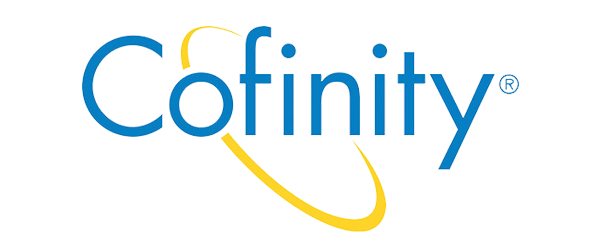Someone taking a prescription for Dilaudid in order to treat their pain may find it a problem-free experience. Then, they begin to notice an over-reliance on the medication which crosses the line into an addiction. If they stop taking the drug, they likely notice they begin to feel Dilaudid withdrawal symptoms. This indicates a person needs professional, clinical help in order to get off the drug and become sober.
What Is Dilaudid?
Dilaudid is the brand name for hydromorphone, which is a prescription medication used to treat pain. It comes in oral liquid, capsule, and tablet form. Hydromorphone falls under the heading of narcotic analgesics and acts on the central nervous system. It attaches to the receptor sites in the brain that have to do with producing neurotransmitters, including dopamine and endorphins, which cause a person to feel joy and control pain and moods. These are naturally produced, but this production can be interrupted when a person becomes addicted to Dilaudid.
This potent drug is used to relieve severe pain, including that which a person might experience round-the-clock without using Dilaudid. It is not intended for mild pain or to be used on an “as-needed” basis. Dilaudid is an opioid with effects that are similar to morphine and heroin. Because of this, a high risk of becoming addicted to Dilaudid exists. In fact, when a person who has been abusing this drug stops taking it, they usually experience Dilaudid withdrawal symptoms.
Dilaudid Withdrawal Symptoms
When someone who has become addicted to Dilaudid stops taking the drug, they likely will experience withdrawal symptoms. These can range from physical to emotional and prove difficult to undergo without professional treatment that can offer relief. Common physical Dilaudid withdrawal symptoms include:
- Fever
- Nausea
- Vomiting
- Diarrhea
- Flu-like symptoms
- Muscle aches and spasms
- Loss of appetite
- Difficulty sleeping
- Sweating
- Difficulty thinking
- Cravings for the drug
Emotional and psychological Dilaudid withdrawal symptoms include:
- Anxiety
- Depression
- Moodiness
- Suicidal thoughts
Dilaudid Withdrawal Timeline
When someone considers getting treatment for addiction, they often have concerns about what the withdrawal process will feel like. This includes how long they can expect to experience Dilaudid withdrawal symptoms. Each person is different and certain things can factor into their withdrawal timeline, including how long they’ve been addicted and what dosage of the drug they typically take. However, a general Dilaudid withdrawal timeline is as follows:
4 to 8 hours after last use: Cravings to use the drug usually begin during this time period. Other withdrawal symptoms may include nausea, fever, and sweating. Feelings of anxiety and irritability also will develop.
12 to 48 hours after last use: Withdrawal symptoms are often at their most intense during this time. People often experience nausea, vomiting, diarrhea, sweating, fever, headaches, chills, difficulty sleeping, and loss of appetite. Cognitive difficulties may occur, including feeling confused, trouble with memory, performing tasks, and paying attention. The person may also feel increased anxiety, and depression, and have suicidal thoughts. Cravings for Dilaudid will also increase.
48 to 72 hours after last use: During this time, many of the withdrawal symptoms will continue but become less intense. Common symptoms include nausea, loss of appetite, and continued cravings for the drug. The person may also continue to feel anxiety, depression, and irritability.
5 to 7 days after last use: By this time, most people find their withdrawal symptoms have ended or at least become more manageable. For many, the lingering symptoms that can continue are emotional in nature, including anxiety, depression, and irritability. These symptoms can continue for weeks or months and should be discussed with a treatment professional in order to manage them.
What Is Treatment for Dilaudid Addiction Like?
One of the benefits of getting treatment for addiction is that it helps relieve Dilaudid withdrawal symptoms. This starts with detox in Tampa, which is the first step in how a person stops abusing drugs. This process should never be attempted alone, as it can be dangerous for the individual. As well, most people who try to detox from Dilaudid end up unable to do so and quickly relapse.
Both in detox and during the next phase of addiction treatment, withdrawal symptoms can be treated. A combination of medical and psychological treatment can help ease and even eliminate many withdrawal symptoms, allowing the person to get through the initial stages of becoming sober. When a person has an easier time withdrawing, they prove much more likely to avoid relapsing.
Outpatient programs offer terrific options for getting off Dilaudid and controlling any withdrawal symptoms that occur. Outpatient care takes place during the day, allowing the individual to attend treatment sessions while still living at home. Outpatient programs offer multiple types of therapy proven to help people with substance use disorders, as well as address any dual diagnosis disorders.
Get Treatment for Drug Rehab in Tampa Bay
Have you developed an addiction to Dilaudid and need to take the first step to get professional treatment? You may find yourself afraid of what going through withdrawal may feel like, and it makes it hard to commit to getting help. Our drug rehab in Tampa has several outpatient programs that include proven methods of reducing and eliminating Dilaudid withdrawal symptoms. This helps make getting sober easier which, in turn, means you are much more prepared to avoid relapsing in the long term.
Visit our admissions page now and find out how we treat Dilaudid addiction. Our admissions process is easy and you can get started right away.







